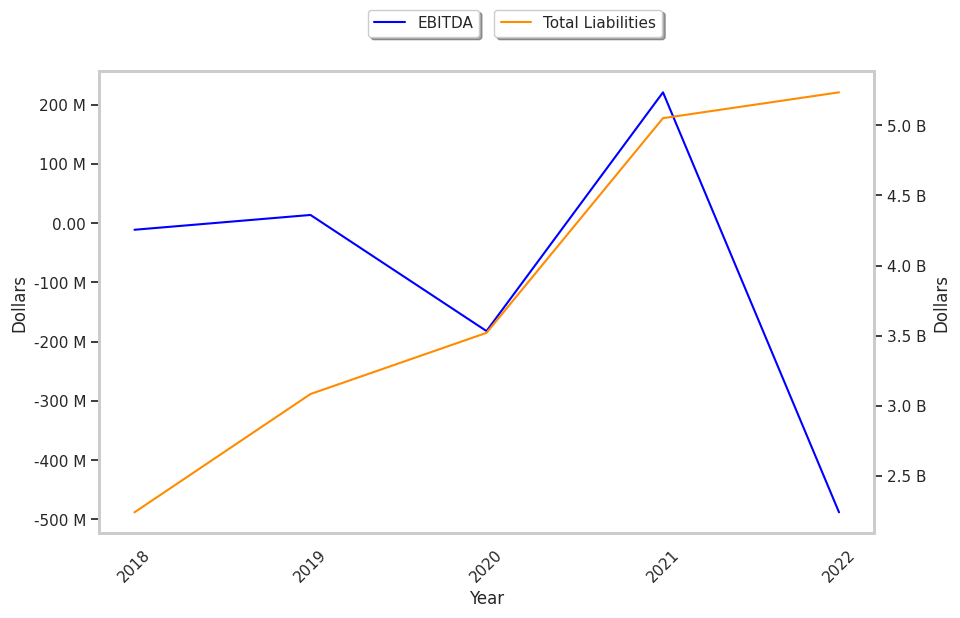Standing out among the Street's worst performers today is Spotify Technology, a broadcasting company whose shares slumped -3.4% to a price of $154.71, 10.05% below its average analyst target price of $171.99.
The average analyst rating for the stock is buy. SPOT underperformed the S&P 500 index by -3.0% during today's afternoon session, but outpaced it by 29.0% over the last year with a return of 40.0%.
Spotify Technology S.A., together with its subsidiaries, provides audio streaming services worldwide. The company is a consumer cyclical company, whose sales and revenues correlate with periods of economic expansion and contraction. The reason behind this is that when the economy is growing, the average consumer has more money to spend on the discretionary (non necessary) products that cyclical consumer companies tend to offer. Consumer cyclical stocks may offer more growth potential than non-cyclical or defensive stocks, but at the expense of higher volatility.
Spotify Technology does not release its trailing 12 month P/E ratio since its earnings per share of $-5.38 are negative over the last year. But we can calculate it ourselves, which gives us a trailing P/E ratio for SPOT of -28.8. Based on the company's positive earnings guidance of $0.47, the stock has a forward P/E ratio of 329.2. The P/E ratio is the company's share price divided by its earnings per share. In other words, it represents how much investors are willing to spend for each dollar of the company's earnings (revenues minus the cost of goods sold, taxes, and overhead). As of the first quarter of 2023, the consumer discretionary sector has an average P/E ratio of 22.33, and the average for the S&P 500 is 15.97.
A significant limitation with the price to earnings analysis is that it doesn’t account for investors’ growth expectations in the company. For example, a company with a low P/E ratio may not actually be a good value if it has little growth potential. Conversely, companies with high P/E ratios may be fairly valued in terms of growth expectations.
When we divide Spotify Technology's P/E ratio by its projected 5 year earnings growth rate, we see that it has a Price to Earnings Growth (PEG) ratio of 0.25. This tells us that the company is largely undervalued in terms of growth expectations -- but remember, these growth expectations could turn out to be wrong!
To understand the company's long term profitability and market position, we can analyze its operating margins, which are the ratio of its net profits to its revenues. Over the last four years, Spotify Technology's operating margins have averaged -2.2% and displayed a mean growth rate of -41.2%. These numbers show that the company may not be on the best track.
When we subtract capital expenditures from operating cash flows, we are left with the company's free cash flow, which for Spotify Technology was $71.0 Million as of its last annual report. Free cash flow represents the amount of money available for reinvestment in the business or for payments to equity investors in the form of a dividend. In SPOT's case the cash flow outlook is weak. It's average cash flow over the last 4 years has been $406.2 Million and they've been growing at an average rate of 0.0%.
Value investors often analyze stocks through the lens of its Price to Book (P/B) Ratio (its share price divided by its book value). The book value refers to the present value of the company if the company were to sell off all of its assets and pay all of its debts today - a number whose value may differ significantly depending on the accounting method. Spotify technology's P/B ratio is 14.66 -- in other words, the market value of the company exceeds its book value by a factor of more than 14, so the company's assets may be overvalued compared to the average P/B ratio of the Consumer Discretionary sector, which stands at 3.12 as of the first quarter of 2023.
Since it has a negative P/E ratio, an elevated P/B ratio, and irregular cash flows with a flat trend, Spotify Technology is likely overvalued at today's prices. The company has poor growth indicators because of a negative PEG ratio and consistently negative margins with a negative growth trend. We hope you enjoyed this overview of SPOT's fundamentals. Be sure to check the numbers for yourself, especially focusing on their trends over the last few years.



